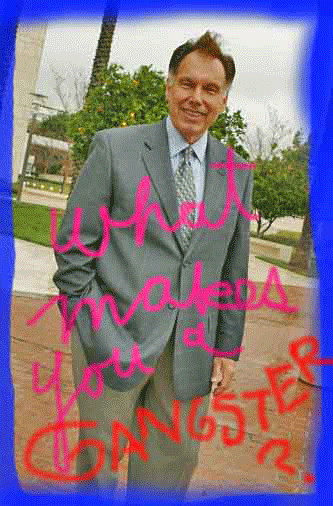
In a significant victory for the So Cal ACLU, on Tuesday, a federal judge ruled that Orange County District Attorney Tony Rackauckas and the City of Orange Police Department had violated the Constitutional rights of more than 60 people by enforcing a highly restrictive gang injunction against them, without ever giving those same individuals a hearing to determine whether or not they were actually gang members.
The circumstances behind the case began in late March 2009 when OC DA Rackauckas filed an injunction against a gang known as Orange Varrio Cypress, or OVC, which generally claims territory in the traditionally Mexican American area of the City of Orange known as Barrio Cypress.
Functionally, a gang injunction works like a restraining order. But, instead of barring contact with an individual, it bans certain activities by purported members of a particular group named in the order.
Here’s a clip from the post I wrote back in 2009 (here and here) that will give you a little more of the backstory:
The OVC injunction demarcates a 3.8-square-mile area the DA has designated as the Safety Zone. This section of Orange, which amounts to 16 percent of the city, is located mostly in Orange’s downtown sector, west of the 55 Freeway. In the Safety Zone, alleged gang members are not allowed to be in the presence of anyone else who is allegedly a gang member. They are also barred from drinking alcohol, or to being nearby to anyone else who is drinking alcohol, or to wearing “gang attire, ” which is a woozy term that means certain brands and certain colors. In addition, those named in the injunction must obey a 10 p.m. curfew.
And there are other prohibitions. Among the most bizarre is the rule that alleged OVC gang members named are forbidden to stand in front of a famous local mural painted by the highly respected artist Emigdio Vasquez. It seems that the police have deemed the mural as OVC’s gang “flag.”
If those named in the injunction violate any of these restrictions, they face six months in jail and a hefty fine.
With previous Orange County gang injunctions, there had sometimes been minor protests, but they had come to nothing.
This time community members and activists seemed far more determined in their objections, saying that the police at the DA had cast an absurdly wide net that amounted to racial profiling. It was, they said, making the lives of the innocent people named to the list….. simply impossible.
Around sixty of the 100 or so people named on the injunction as suspected gang members appeared or tried to appear in court to argue that they were not, in fact, gang members. At first prosecutors dismissed those 60+ from the case and obtained the injunction by default only against the gang and those individuals who never appeared in court.
But soon afterward, the District Attorney and police began serving the injunction on the very same people who had been dismissed from the case, on grounds that they were suspected of being part of the OVC gang.
The reasons why various individuals had been labeled as gang members were often preposterously flimsy. One person was listed as a gangster because an officer had once seen him in clothing that the cop deemed to be gang attire, although no one could say precisely what that clothing was. In another case, an individual was seen talking with gang members who also happened to be neighbors and childhood friends.
The restrictions imposed on those named in the injunction made normal daily life difficult. For example, in a couple of instances, sets of brothers could not socialize with each other outside of their homes for fear of being arrested.
U.S. District Court Judge Valerie Baker Fairbank noted other effects of the order in her ruling:
“When the grandfather of one set of [of brothers] had a stroke and was taken to a hospital in the Safety Zone in the middle of the night, their mother was forced to decide whether to permit the brothers to visit the publicly accessible hospital, an act that would violate both the curfew and association provisions of the Order.
To get a better idea of how the injunction worked, the judge spent an hour touring the area it covered before she ruled.
Afterward she wrote “….by subjecting Plaintiffs to the Order, Defendants have imposed a significant restraint on their liberties.
And then finally:
For the reasons set forth above, the court issues an injunction barring Defendants from enforcing the Order against the Plaintiffs.
The ACLU attorneys were thrilled:
“The ruing shows that police and prosecutors cannot take it on themselves to throw out someone’s most basic civil liberties, just because they think that the person might be a gang member,” said Peter Bibring, staff attorney for the So Cal ACLU.
“What the court recognized,” said Bibring ” is that gang injunctions are a big deal. They apply significant restrictions to people’s lives. And police and prosecutors should not be given sole discretion to impose them on an individual without some kind of additional procedural protections.”
Despite the favorable ruling, Bibring admitted that the legal battle over the OC injunction is likely not over.
“Now,” he said, “we’re bracing ourselves for an appeal.”
The OC Weekly, the LA Times and the AP also have the story.
Photo of OC DA Tony Rackauckas from OC Weekly
